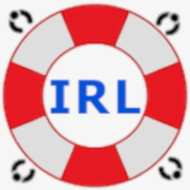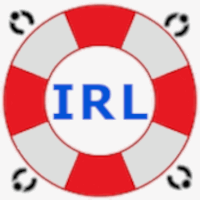Indian River Lagoon Roundtable surveyed it’s membership to determine the top resource areas that we would like the upcoming FAA KSC Starship Super Heavy Launch License Environmental Impact Statement to consider. The public scoping comments that we submitted to the FAA on June 23, 2024 are below:

The Indian River Lagoon Roundtable is a group of informed environmentalists that recognize the importance of both the space industry and our irreplaceable natural resources. Our membership includes scientists, instructors, former NASA – KSC employees, military veterans and concerned citizens who currently serve in ten different local environmental organizations. We are seeking a synergistic relationship between Cape Canaveral Spaceport (CCS) and the Indian River Lagoon National Estuary.
First and foremost, we ask that the 2022 FAA Boca Chica Programmatic Environmental Assessment and its 2023 Written Reevaluation be used as the starting foundation for this Environmental Impact Study (EIS). Both launch complexes are located within estuarine habitats adjacent to National Wildlife Refuges and have substantial human populations nearby. A Cape Canaveral Spaceport (CCS) EIS will require a very similar study and mitigation of the cumulative effects resulting from repeated Starship launches.
Second, we ask that the resource studies conducted for this EIS by the FAA and its designated co-agencies are presented using real quantitative data, actual numbers, and not descriptive generalities.
IRL Roundtable Public Scoping Comments by Study Area
Cumulative Impacts – No one can predict the cumulative impact of hundreds of annual Cape Canaveral Spaceport launches including the forty four Kennedy Space Center (KSC) LC-39A Starship launches studied in this EIS and an additional estimated forty four upcoming Starship launches from Cape Canaveral Space Force Station (CCSFS) SLC37. We must scientifically monitor, record and model the developing spaceport’s impacts on Air, Water, Soil and Noise in order to predict and mitigate the long term cumulative effects of this monumental launch rate.
Water Consumption – The FAA Fact sheet for this EIS states that a Starship Super Heavy launch from LC39A will require one million gallons of water per launch culminating in a total of forty four million gallons annually. This estimate does not include water consumed in the preparation of the vehicle or washdown after recovery. Nor does it consider future water requirements for the estimated forty four additional Starship Super Heavy vehicles to be launched from CCSFS.
The City of Cocoa draws water from an underground aquifer to supply Cape Canaveral Spaceport with potable water. This aquifer contains a finite amount of water and may not support the future annual consumption of eighty eight million gallons required to launch Starship Super Heavy at CCS.
Water Discharge – Low Impact Development directive UFC 3-210-10 should be applied to all future spaceport development. The proliferation of new impervious surfaces such as rooftops, concrete pads and parking lots will result in billions of gallons of polluted freshwater discharging into our saltwater estuary instead of recharging the local aquifers. Stormwater should be captured where it falls, stored on-site and used in place of potable water whenever possible.
Noise – Local residents are highly concerned about the noise levels associated with huge numbers of launches and sonic booms from landings. Night operations may disturb people and animal’s diurnal habits. Noise levels on the mainland should adhere to state, county and municipal noise ordinances.
Biological Resources – Merritt Island National Wildlife Refuge and Cape Canaveral National Seashore visitors are a large part of the local ecotourism industry. The loss of wildlife, undisturbed habitat and public access will result in fewer recreational activities for residents and lost income for the local economy. A thorough review and evaluation of the cumulative impact to threatened and endangered species of terrestrial and aquatic plants and animals and their habitat is essential. This study area should cover Florida Scrub-Jays, sea turtles, gopher tortoises, eastern indigo snakes, southeastern beach mice and other native flora and fauna. The study should include an initial wildlife inventory and continuous monitoring of the population’s numbers, nesting habits and habitat.
Thank you for this opportunity to participate in the public scoping process for the FAA Starship Super Heavy Launch License Environmental Impact Statement. Together we can maximize the science in order to minimize the impacts of a growing spaceport embedded in an estuary of national significance.
Download: IRL Roundtable Starship EIS Scoping Comments (PDF, 2pp)
Seventy four public comments were submitted for this EIS Scoping process.

